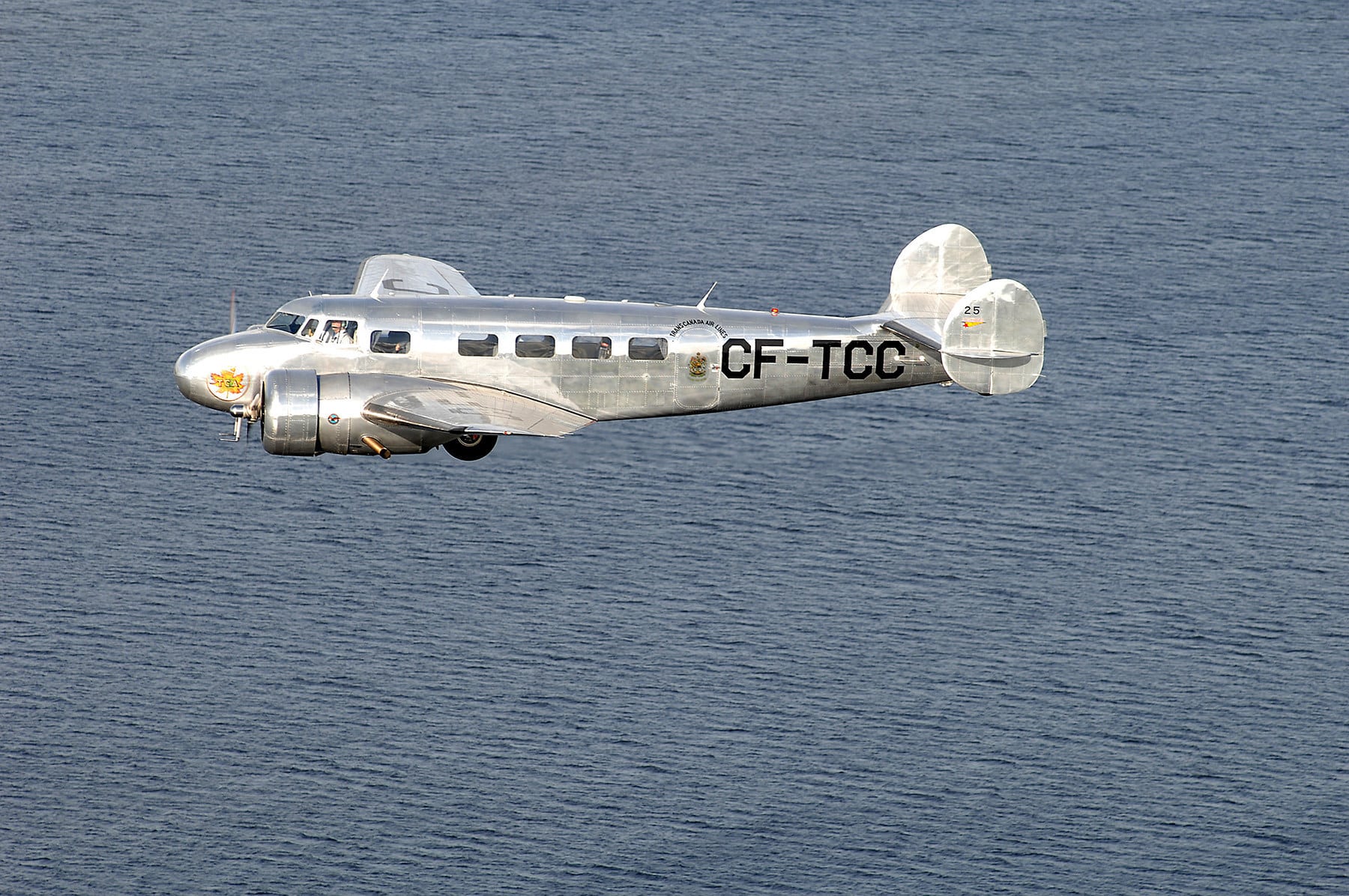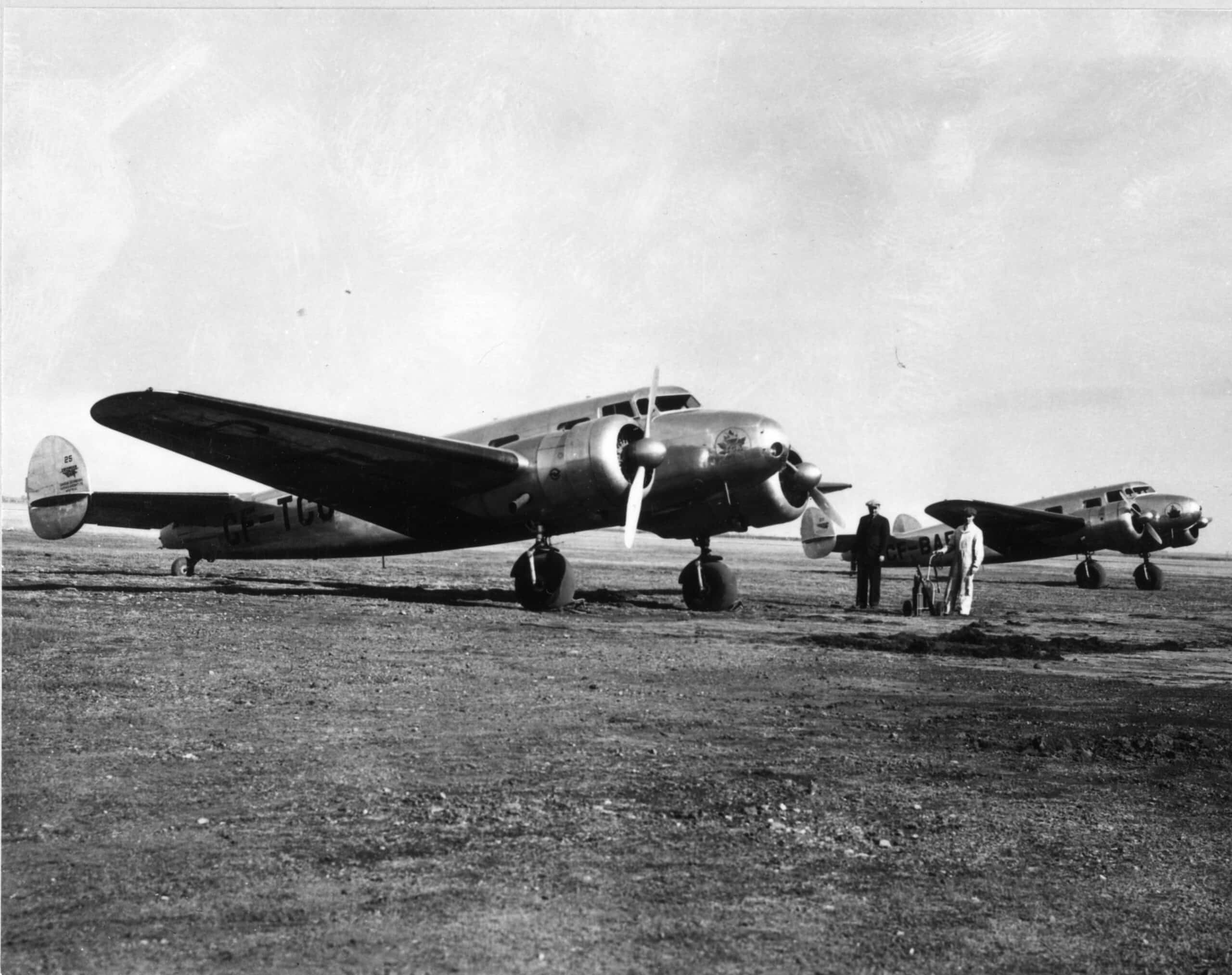Aviation
Air Canada’s Lockheed 10-A Takes to the Skies to Mark the Airline’s 80th

MONTREAL, Sept. 9, 2017 /CNW Telbec/ – In honour of Air Canada‘s 80th anniversary, Air Canada’s Lockheed 10A vintage aircraft is taking to the skies across Canada. After taking off this morning from Vancouver, BC, the L-10A will be making overnight stops as well as fuel stops at airports across Canada, and will be on public display at the Royal Aviation Museum in Winnipeg on September 13 and 14. More information is at: http://www.
As part of the tour, the vintage 10-seat aircraft will overnight in Edmonton, Saskatoon, Regina, Winnipeg, Thunder Bay, Toronto, Ottawa, Montreal, and Halifax. The plane may also make a fuel stop in your community. Look out Calgary, Sudbury, Quebec City, and possibly more! Aviation enthusiasts may track the aircraft’s movements by its registration, CF-TCC, and look out for the silver aircraft in the skies as follows:
- This week: B.C., Alberta, Saskatchewan
- Week of September 11: Saskatchewan, Manitoba, Ontario
- Week of September 23: Ontario, Quebec, Maritimes, and returns to Manitoba.

Winnipeg, Manitoba, Spring 1938
Lockheed 10-A’s CF-TCC & CF-BAF on tarmac preparatory to pilot training flights at Winnipeg During the period when the first copilots were receiving training. Person in dark suit: Capt Kelly Edmison and Maurice McDevitt – Air Engineer (in business in Wpg) in coveralls (CNW Group/Air Canada)

What-s That Silver Plane in the Air? Air Canada-s Lockheed 10-A Takes to the Skies to Mark the Airline-s 80th Anniversary (CNW Group/Air Canada)
About the Lockheed L-10A Electra
The Lockheed L‐10A Electra was designed in the mid-1930s by the Lockheed Aircraft Corporation, to compete against the Boeing 247 and the Douglas DC‐2. This was Lockheed’s first all‐metal twin engine aircraft design, and was first flown on February 23rd, 1934.
Although the aircraft was operated by many commercial airlines in the 1930s, the Lockheed Electra was made most famous by aviatrix Amelia Earhart, who in 1937, disappeared in her L-10E Electra while attempting an around‐the‐world flight. The only difference between the two models is that the L‐10E was equipped with larger, more powerful Pratt & Whitney R1340 engines.
Trans Canada Air Lines and the Lockheed L-10A
On September 1st, 1937 Air Canada’s forerunner, Trans Canada Air Lines (TCA), launched its first commercial passenger flight; a fifty-minute trip from Vancouver to Seattle. TCA had acquired the route plus two Lockheed L‐10A aircraft from Canadian Airways.
In that same month, TCA bought three additional Lockheed L‐10A aircraft, brand new, from the Lockheed factory for $73,000 each. These aircraft were dubbed the “Three Sisters” and carried the registrations CF‐TCA, CF‐TCB, and CF‐TCC. The first aircraft, CF‐TCA can now be found in the Canadian Aviation and Space Museum in Ottawa. CF‐TCC is the silver aircraft flying across Canada and is only one of two Lockheed L‐10A Electra aircraft flying in the world.
The History of CF-TCC
After being operated by Trans Canada Air Lines from 1937 to 1939, CF‐TCC was sold to the Canadian Government and operated by the RCAF as part of the War Effort during World War II. During the next 40 years, the aircraft was sold several times to various private corporations and individuals. In 1975, a retired Air Canada employee recognized the faded old registration marks on the aircraft while attending an air show in Texas. Air Canada kept track of the aircraft until 1983, at which point the company purchased the aircraft back, restored it, and flew it during Air Canada’s 50th Anniversary celebrations in 1986. At the end of the Fifty stop Canadian tour, CF‐TCC was featured in the Air Canada pavilion during Expo 86 in Vancouver.
Since 1986, the aircraft has been maintained in flying condition. Air Canada employee and retiree volunteers from Air Canada Maintenance and Flight Operations have put thousands of hours of personal time into keeping CF‐TCC, our Air Canada heritage, flying for future generations to enjoy.
About Air Canada
Air Canada is Canada’s largest domestic and international airline serving more than 200 airports on six continents. Canada’s flag carrier is among the 20 largest airlines in the world and in 2016 served close to 45 million customers. Air Canada provides scheduled passenger service directly to 64 airports in Canada, 57 in the United States and 95 in Europe, the Middle East, Africa, Asia, Australia, the Caribbean, Mexico, Central America and South America. Air Canada is a founding member of Star Alliance, the world’s most comprehensive air transportation network serving 1,300 airports in 191 countries. Air Canada is the only international network carrier in North America to receive a Four-Star ranking according to independent U.K. research firm Skytrax, which also named Air Canada the 2017 Best Airline in North America. For more information, please visit: www.aircanada.com, follow @AirCanada on Twitter and join Air Canada on Facebook.
SOURCE Air Canada

Aerospace
India is set to build a central command for the Air Traffic Control system, called ISHAN

India’s air traffic growth has led to increased responsibilities for air traffic control. The Airports Authority of India (AAI) is considering centralizing air traffic control for aircraft, dividing the country into four regions. The goal is to consolidate India’s segmented airspace into a single entity to improve air traffic management (ATM) efficiency, safety, and smoothness.
Recently, the AAI invited expressions of interest to develop a detailed project report for the Indian Single Sky Harmonized Air Traffic Management (ISHAN) initiative in Nagpur. Under this plan, air traffic controllers in Nagpur would handle domestic flights flying above 25,000 feet, eliminating the need for coordination among controllers in different regions.
For domestic regional flights operating above 25,000 feet, control would shift to the central command in Nagpur. This consolidation aims to enhance airline operations, increase flight handling capacity, and reduce congestion and flight times for passengers.
Currently, the AAI provides ATM services over Indian airspace and adjoining oceanic areas, covering over 2.8 million square nautical miles. This airspace is divided into four flight information regions (FIRs) in Delhi, Mumbai, Kolkata, and Chennai, along with a sub-FIR in Guwahati.
FIRs are responsible for providing air traffic services, including weather information, visibility, and search and rescue assistance. The proposed unification under the ISHAN initiative aligns with the projected growth of the aviation industry, which anticipates a doubling of domestic passenger traffic by 2030.
Aviation
Airbus is set to increase the production rate for the A350 as demand surges

Airbus SE is set to boost production of its advanced A350 widebody jet as it capitalizes on rising demand for long-distance travel and wide-body aircraft, amidst the ongoing crisis affecting its competitor Boeing due to issues with the B737 Max.
The surge in orders for Airbus’s A350 aircraft has instilled confidence in the company, prompting them to ramp up production rates. This move is particularly advantageous as Boeing continues to grapple with production quality issues surrounding its 787 and 777x aircraft.
In 2024 alone, Airbus has received 137 orders for the A350, signaling a need to expand manufacturing capabilities to meet customer demands. With 1,277 orders received and 592 aircraft delivered as of April 2024, Airbus is poised to fulfill pending deliveries efficiently.
The European aircraft manufacturer announced plans to increase production of A350 jets to 12 per month by 2028, surpassing earlier projections aiming for 10 per month by 2026. This decision was disclosed alongside the company’s first-quarter figures.
The Asian market is proving lucrative for the A350, with significant orders from airlines like Indigo and Air India, totaling nearly 70 aircraft commitments for the future. Meanwhile, Airbus is progressing with its A220 and A320 programs, aiming for a monthly production rate of 14 and 75 aircraft, respectively, by 2026. Additionally, the long-range A321XLR is anticipated to commence service in the third quarter of the current year.
In contrast, Boeing has been compelled to scale back production due to regulatory pressures aimed at enhancing factory processes. While Airbus anticipates a positive market outlook, Boeing continues to face challenges with FAA certification and quality approvals, resulting in ongoing delays for its 737 Max and 777x models.
Financially, Boeing reported a significant cash burn of $3.9 billion in the first quarter, leaving it with $7.5 billion in cash and short-term securities by the quarter’s end, down from $16 billion at the beginning of the year. Consequently, Boeing’s stock has plummeted by 38% in the year so far, contrasting with Airbus’s 14% gain, marking Boeing’s lowest performance in over a year.
For a full listing including details on customers and regions, as well as historical data for the previous year, go to the download section below.
- March 2024 deliveries: 63 deliveries to 32 customers
- March 2024 gross orders: 137
- 2024 deliveries to date: 142 deliveries to 45 customers
| Single-Aisle | A300/A310 | A330 | A340 | A350 | A380 | TOTAL | |
|---|---|---|---|---|---|---|---|
| Total Orders | 19470 | 816 | 1774 | 377 | 1277 | 251 | 23965 |
| Total Deliveries | 11705 | 816 | 1598 | 377 | 592 | 251 | 15339 |
| Aircraft in Operation | 11007 | 271 | 1482 | 202 | 591 | 234 | 13787 |
Aviation
All passengers killed in plane crash, after pilot let his children to control the plane

When boarding a plane, passengers entrust their safety to the skilled hands of the pilot. However, tragedy struck when one of the flight ended in disaster as all passengers lost their lives in a horrific plane crash.
In 1994, during a flight from Moscow to Hong Kong, tragedy struck as an Aeroflot relief pilot made a fateful decision. In a move that would have devastating consequences, the pilot invited his own children into the cockpit to play with the controls. Little did anyone know, this seemingly innocent gesture would lead to the loss of all 75 lives aboard the aircraft.
It was a seemingly innocent act that led to catastrophic results. The relief pilot, Mr. Kudrinsky, invited his two children, Yana, 12, and Eldar, 15, into the cockpit during the late hours of the night. Little did anyone know, this simple gesture would set off a chain of events that would end in tragedy.
Once in the cockpit, the children were allowed to sit in the captain’s chair and play with the controls, unaware that they should have been disabled as the plane was in autopilot mode.
Eldar, perhaps in a moment of curiosity or innocence, held the control column down for a mere 30 seconds. Yet, in those brief moments, the autopilot disengaged, thrusting the aircraft into manual control.
By the time the pilots regained their seats and attempted to regain control, it was too late. Despite their efforts to pull the plane out of a dive, they overcorrected, causing the flight to climb almost vertically, ultimately stalling it.
Final moment Flight 593 crash
In the final moments, as the pilots struggled to stabilize the aircraft, Flight 593 crashed into the Kuznetsk Alatau Mountain range in southern Russia, completely obliterating the plane and claiming the lives of everyone on board.
Investigations revealed a chilling truth: there was no evidence of technical failure. Instead, the crash was attributed to the unthinkable decision to allow inexperienced hands to manipulate the controls of a commercial aircraft.
The black box recording captured the harrowing sequence of events, providing a grim reminder of the human cost of a lapse in judgment. In just over two minutes, the lives of all on board were tragically short, leaving behind a legacy of sorrow and unanswered questions.






















